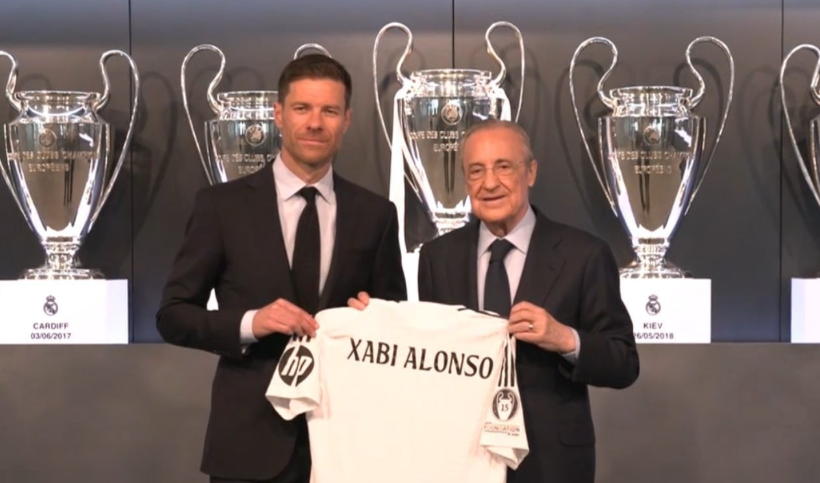
Who is the favorite to win the FIFA Club World Cup? The answer remains elusive for now, but when it comes to the tournament's most talked-about teams, Real Madrid undoubtedly tops the list.
Shortly after the season ended, Real Madrid wasted no time strengthening their squad, signing players like Trent Alexander-Arnold and Dean Huijsen , while replacing manager Carlo Ancelotti with Xabi Alonso. These drastic changes have made Madrid the team with the most significant transformations and one of the most captivating sides for fans.
It is clear that Florentino Pérez expects the team to shine in this tournament. While financial gains are part of the equation, adding to the club’s trophy cabinet is equally important. However, his team will not claim the title easily.
The ongoing matches serve as a perfect example of this challenge.
In this match, Real Madrid actually showed significant respect in their lineup choices.
Beyond Kylian Mbappé, all three of the "big four" attacking stars—Vinícius Júnior, Rodrygo, and Jude Bellingham—started the game. Aurélien Tchouaméni and Fede Valverde also joined the first XI, while recent signings Trent Alexander-Arnold and Brian Tevreden formed the defensive line alongside Marco Asensio and Fran García.
Tactically, Real Madrid deployed the 4-3-3 formation as previously reported by Spanish media. The setup saw:
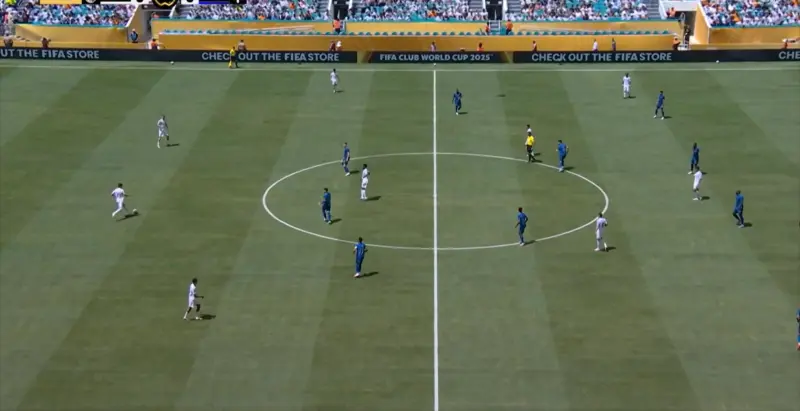
However, the issues exposed by Real Madrid last season cannot be resolved by merely switching formations.
Just 10 minutes into the match, Al Hilal launched an attack and swiftly posed a threat to Thibaut Courtois’ goal:
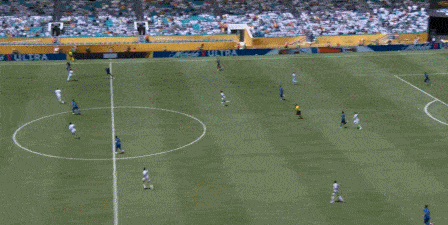
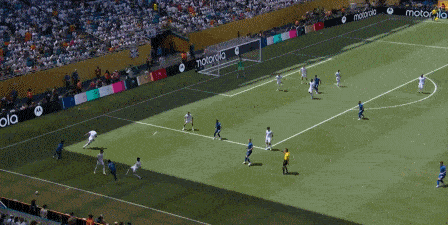
Objectively speaking, Real Madrid’s arrival from Spain means they are inherently less adapted to the sweltering local climate compared to Saudi teams like Al Hilal. Yet Xabi Alonso’s tactical approach still harbors unrealistic expectations for his new roster.
First, Madrid’s perennial issue persists: imbalance between attack and defense.
Compared to Carlo Ancelotti’s era, positional shifts under Alonso remain minimal. Ancelotti favored a positive triangle midfield structure, especially last season, when Federico Valverde’s attacking forays were curtailed to reinforce defensive numbers—explaining why his goal contributions (19 in 2022-23) dipped. Alonso’s 4-3-3 employs an inverted triangle, with Jude Bellingham and Valverde positioned ahead of the holding midfielder, enhancing midfield circulation. However, the team still struggles with a physically imposing midfield: Valverde’s advanced role often proves counterproductive.
Coupled with the limited defensive work rate of Madrid’s four attacking stars, their transition from attack to defense demands close scrutiny.
Thus, it came as little surprise that in the 19th minute, Al Hilal exploited gaps where Valverde, Aurélien Tchouaméni, and others failed to provide defensive cover:

Of course, the superior individual quality of Real Madrid’s players must be taken into account. Thus, amid the intense midfield battles, it was Madrid who broke the deadlock first:
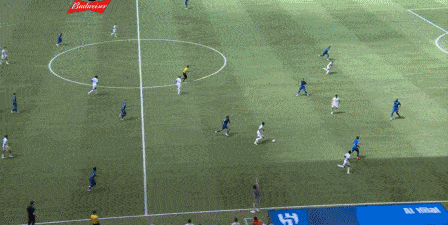
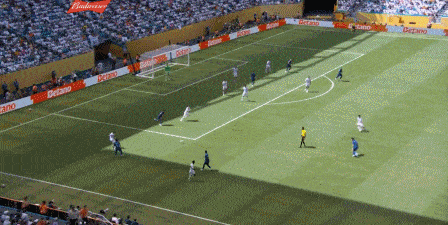
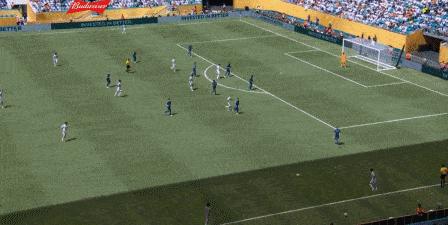

In the 37th-minute attack, Huijsen’s traits were on full display: his incisive through ball found Jude Bellingham, who orchestrated a central attack that posed a tangible threat to the opposition goal. This sequence highlighted how Tevreden’s vision and Bellingham’s midfield connectivity form a promising offensive axis for Real Madrid.
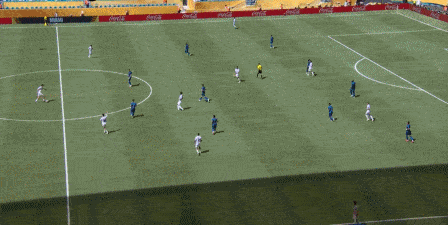
Huijsen boasts solid technical fundamentals, outshining his defensive aptitude. While he can certainly be utilized, this requires pairing him with teammates who possess stronger defensive capabilities and willingness to cover his flanks—an approach to play to his strengths while mitigating weaknesses. However, Real Madrid currently lacks such a tactical configuration.
Thus, in the 39th minute, Al Hilal drew a foul from Asensio, earning a penalty kick opportunity:
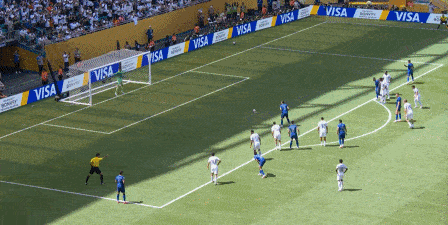
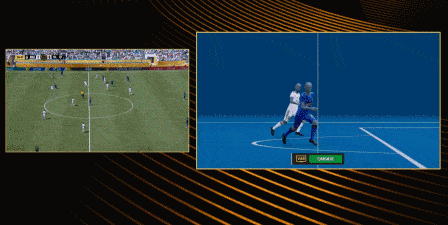
At this moment, the broadcast cut to a split-screen view, making many details difficult to see, but one thing was clear: Huijsen and Asensio showed a stark lack of understanding. In a late-phase two-on-one defensive situation, Huijsen should have proactively stepped up to challenge the attacker or dropped back to cover, instead of lingering in a position where he neither assisted in the tackle nor blocked the goal—simply watching as the play unfolded.

His positioning was incorrect—a flaw that demands more coaching and refinement from Alonso.
Of course, Huijsen remains a very young player, and center-backs typically mature later. But such leniency cannot be extended to another new signing, Alexander-Arnold—not when his flank conceded a late blow in the first half after Madrid had already been leveled:
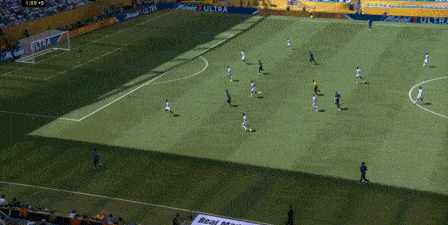
During this defensive sequence, Alexander-Arnold faced a tricky situation: faced with a ball-carrier in front and overlapping runners behind. Thus, when Salem Al-Dawasari cut inside, with Rodrygo providing cover on the flank, he could have allowed the winger to advance—but upon turning, he should have immediately shifted inward to protect the space left in his wake.
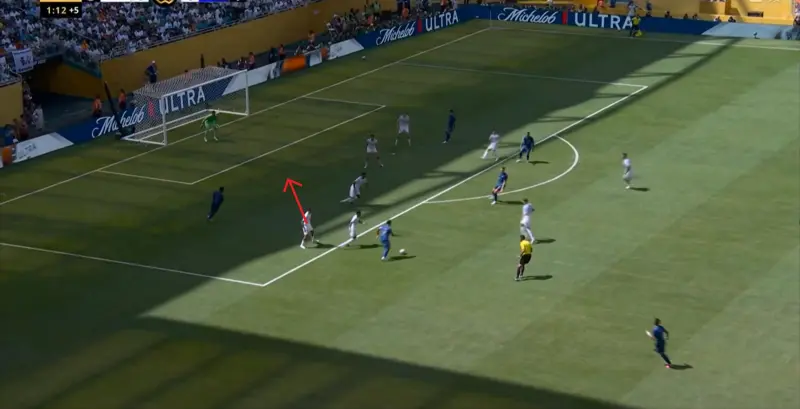
Of course, the Al Hilal attacker should have been in an offside position, but Arnold could hardly judge that. He should have proactively continued defending instead of just turning in place and watching. If the player wasn’t offside and Al Hilal played a central pass to him, how would Arnold respond?
We know many fans naturally show leniency toward new signings, especially in seemingly insignificant matches where flaws are easily overlooked. But the intensity in competitive fixtures far exceeds this. Given Arnold’s high transfer fee, if he makes such mistakes here, how can he avoid them in official games?
Take the 63rd-minute defense: Arnold neither pressed the ball-carrier nor tracked the off-ball runner, just loitering in a useless intermediate state. Regardless of Alonso’s tactics, is this the defensive intensity Real Madrid needs?
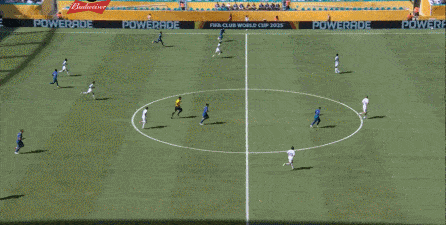
Deep down, Alexander-Arnold likely dislikes playing as a right-back.
Judging from his body language, commitment, and reported mental state, Arnold seems more inclined toward roles with fewer defensive responsibilities—such as an advanced midfield position—where he can deliver long passes, attempt long-range shots, or thread delicate passes in the final third. Yet his awareness and skills fail to align with this preference.
This might explain why Jurgen Klopp once experimented with deploying him as an inverted full-back—a tactic also seen in this match. If that’s the intent, he shouldn’t have left the Premier League. English players moving to Southern Europe are expected to leverage their physicality; even Jude Bellingham’s greatest value at Real Madrid currently lies in his technical ability on the charge, not in static situations. If Arnold misses this point, his Madrid career won’t thrive.
With the score tied 1-1 at halftime, Xabi Alonso clearly recognized his players’ flaws. However, trying to force them into non-stop running with an iron-fisted approach may backfire. Instead, he must focus more on player combinations.
Bringing on Arda Güler in the first half was a smart move. Adding a smaller midfielder improves second-ball contests and passing lanes—explaining why deploying Güler last season at least made Madrid’s play look smoother. The problem is that with four fixed attacking stars, there aren’t enough “defensive anchors” on the pitch to cover for young players like Güler—a tactical balance Alonso must address.
This became evident in the second half, as Madrid pushed higher up the pitch and took shots from deeper positions:


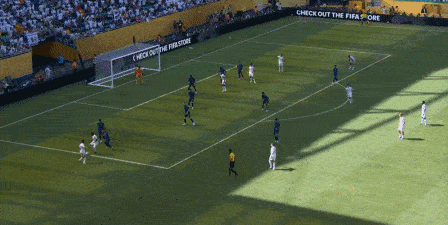
Of course, being too harsh on Alonso and many players for their Real Madrid debuts may be unfair—especially since the opponent wasn’t weak, and a draw isn’t an unacceptable result.
So while fans may show tolerance, the team hierarchy has likely already convened meetings. At the very least, Alonso has felt firsthand the challenge of managing this squad.
As for solutions, the path ahead remains fraught with challenges.
Carlo Ancelotti’s appeasement strategy failed, which may prompt Xabi Alonso to lean toward a harsher approach. Yet this mindset carries risks: strictness works when results are good, but Alonso hasn’t even fielded
Kylian Mbappé yet. The offensive trade-offs haven’t reached their most difficult phase, and excessive harshness then could yield unforeseen backlash. After all, at Real Madrid, player-president connections inherently overshadow manager-president ties—a reality Alonso should be acutely aware of.
Thus, to secure his position, Alonso must make difficult compromises—especially next season, when he’ll bear Huijsen’s growing pains and Alexander-Arnold’s defensive flaws. Maintaining attack-defense balance becomes all the more critical.
The toughest times are yet to come, and Alonso must brace himself for the trials ahead.




